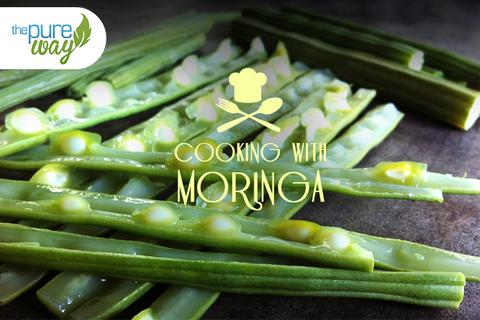4 Ways to Cook with Moringa
A Traditional Moringa Meal
If you visit the southern part of India, you can see the extensive use of drumsticks in a traditional dish called “sambar”. This particular dish is cooked in homes and top restaurants alike. Sambar is a lentil based dish which is made with lots of different vegetables like pumpkin, potato, onion, okra, drumsticks and lots of spices.
The tantalizing aroma of a well-cooked sambar can make you salivate like a hungry K-9. The gooey interior and smell of the boiled drumsticks provide an irreplaceable flavor to the sambar.
You can click here for an incredible sambar recipe
3 Other Delicious Uses for Moringa
Moringa Leaf Salad
To make moringa leaves the star of your dish, add them to your mixed greens salad and dress with a homemade olive oil vinaigrette. Moringa leaves are bitter, especially the older ones (you can get the younger shoots in the fall and early winter) so we suggest mixing them with your greens instead of using them alone as your salad green.
Drumstick Curry
Some might find cooking drumsticks a tedious task because you need to remove the skin to cook them. But, we all know that most good things need some hard work to get the best results!
Here’s a simple curry drumstick recipe which is made everywhere in India. All you need is to mix some onion, ginger, garlic, and finely cut tomatoes and saute with some spices to get a thick gravy. Mix boiled drumsticks in and voila you have a healthy curry on your plate!
Leaf Powder Latte
To make a latte, use a teaspoon to a tablespoon (depending on your taste) of moringa powder with an equal part of honey.
Using a milk steamer or a small saucepan, slowly heat your choice of milk (we like coconut milk) until it bubbles, and pour it over your mix, stirring slowly.
Next time you’re in the mood for a delicious healthy meal, think about including Moringa oleifera into your dish! Your body will thank you later!
Stay pure my friends!
References
*1 Antioxidant Activity and Total Phenolic Content of Moringa oleifera Leaves in Two Stages of Maturity. S. Sreelatha and P.R. Padma. Plant Foods Hum Nutr 2009.


0 comments